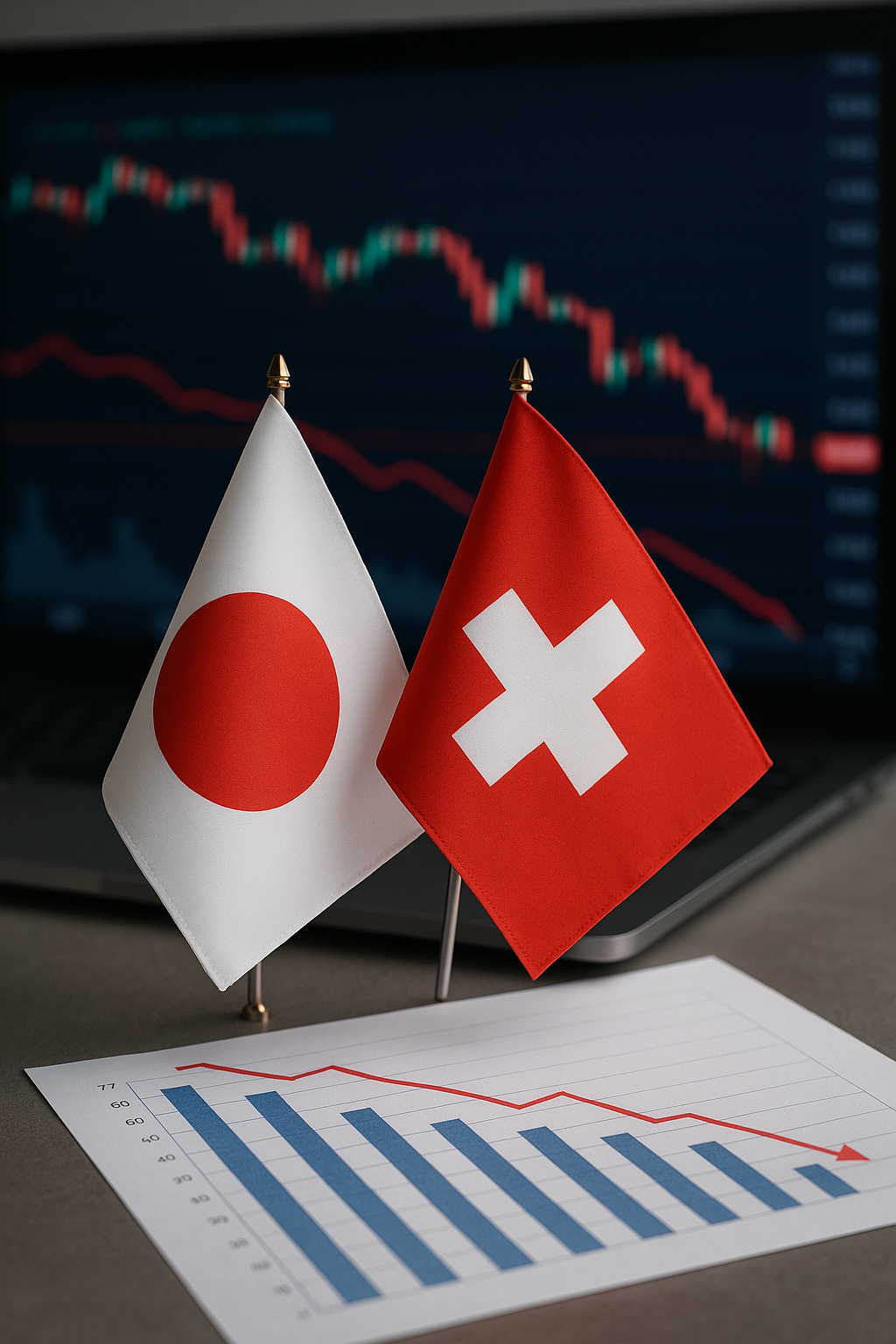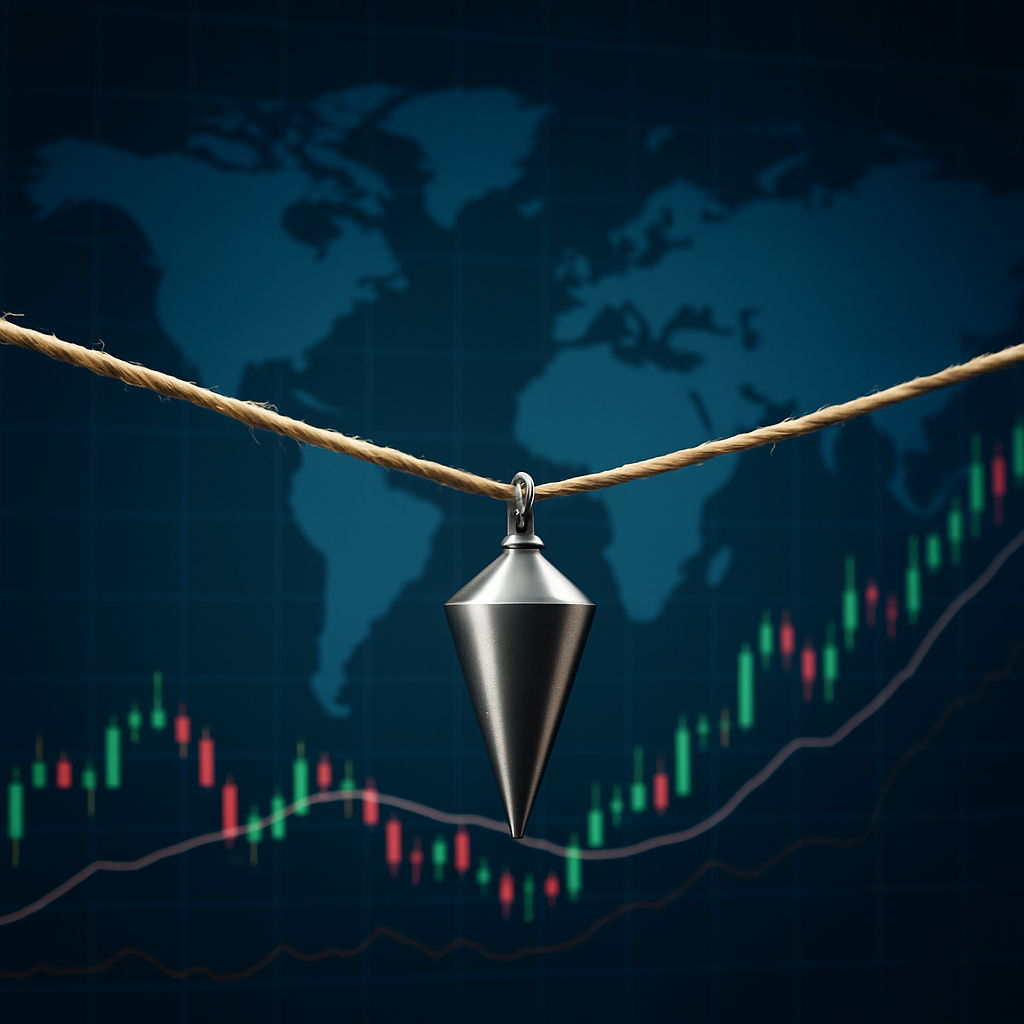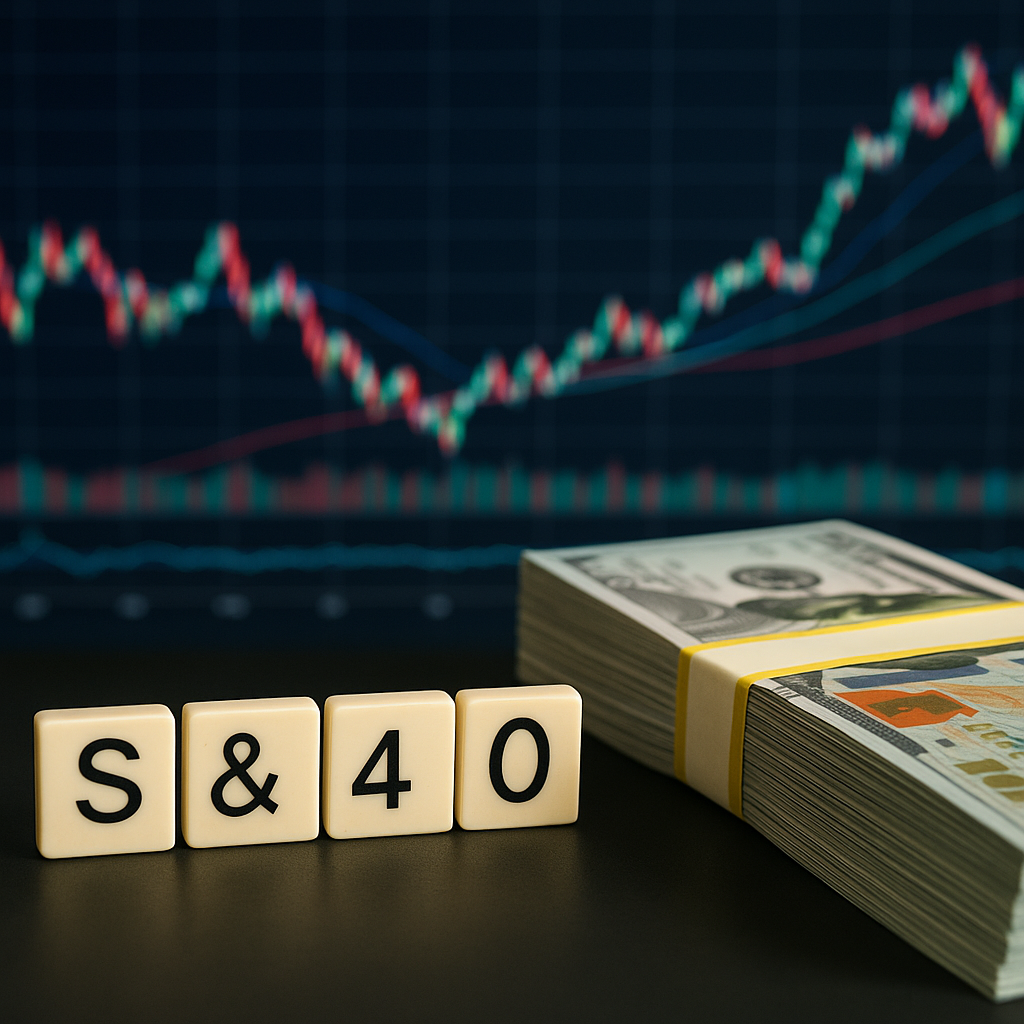Global markets are once again being reminded of the growing cost of geopolitical and trade tensions. Fresh data showing Japan’s economy contracting by –0.4% in Q3 and Switzerland shrinking by –0.5% has intensified concerns that major exporters are losing momentum as U.S. tariff measures ripple through international supply chains. According to new reporting from The Guardian, both economies—typically considered resilient, stable, and export-driven—are now showing signs of pressure as global trade conditions deteriorate.
The timing could not be more consequential. With investors already grappling with volatile bond markets, a strong U.S. dollar, and mixed manufacturing indicators across Europe, the latest GDP contractions signal a broader structural challenge: the re-emergence of trade policy as a dominant macro driver. This new phase of tariff-driven slowdowns is reshaping investment strategies across equity, currency, and commodity markets.
A Closer Look at Japan and Switzerland’s Downturns
Japan’s –0.4% GDP reading reflects a notable pullback in exports as well as softer consumer activity. Several Japanese industries—auto manufacturing, precision machinery, and electronics—have been directly affected by U.S. trade barriers and the resulting slowdown in global demand. Rising import costs due to a weaker yen have further complicated the economic picture.
Meanwhile, Switzerland, despite its reputation for economic stability and high-value exports, posted a larger contraction at –0.5%. Swiss machinery, chemicals, and luxury goods producers have been squeezed by slowing European orders and heightened uncertainty surrounding U.S. tariff policy. Even Switzerland’s robust services sector saw reduced momentum as global corporate spending weakened.
Both economies rely heavily on international trade, making them early indicators of global demand shifts. Their synchronized declines underscore the vulnerability of high-income exporters to geopolitical headwinds.
The Tariff Effect: A Growing Source of Systemic Risk
1. U.S. Tariffs Are Creating Shockwaves Beyond Bilateral Trade
While tariffs may be targeted at specific industries or countries, the broader supply-chain impact often spills across continents. The latest U.S. tariff measures—particularly those affecting machinery, automotive, and advanced manufacturing components—have hit key Asian and European exporters unexpectedly hard.
Economists at UBS and ING warn that “secondary exposure” to tariffs is becoming a larger problem: companies not directly targeted by U.S. policy are still facing disruptions due to component shortages, higher input costs, and shifting supply-chain preferences.
2. Europe is Entering a New Trade Risk Phase
Europe, already battling stagnating industrial production, now faces tightening financial conditions and heightened geopolitical friction. For export-heavy economies such as Germany, Switzerland, Netherlands, and the Nordics, any prolonged tariff cycle could weigh on GDP growth for multiple quarters.
The European Central Bank’s own commentary in recent press briefings has acknowledged that cross-border trade tensions have become “a meaningful downside risk” for the eurozone outlook.
3. Currency Markets Are Sending Warning Signals
Japan’s yen continues to struggle near multi-decade lows, partly reflecting rate differentials but also the market’s assessment of structural export vulnerability. Switzerland’s franc, typically a safe-haven currency, has shown less appreciation than expected—suggesting markets are pricing in weaker export demand rather than flight-to-safety buying.
Investors should monitor these FX signals closely, as they increasingly reflect global trade dynamics rather than domestic fundamentals.
Why This Matters for Investors
Exporters and Cyclical Sectors Face Growing Pressure
Industries tied to global demand—autos, industrial machinery, semiconductors, luxury goods—may see narrower earnings visibility heading into 2026 if tariffs persist. Companies with high U.S. exposure or complex cross-border supply chains are most vulnerable.
Bond Markets May Price in Slower Growth
Japanese and Swiss government bonds could see renewed demand if recession risks climb, potentially affecting global yield spreads. Investors in global fixed income markets should watch for defensive positioning.
Supply Chains Are Being Redrawn—Again
This new wave of tariff activity is pushing multinationals to diversify logistics, sourcing, and regional manufacturing hubs. Southeast Asia, India, and parts of Eastern Europe could see incremental investment inflows as companies attempt to reduce dependency on tariff-vulnerable trade lanes.
Future Trends to Watch
1. The Next Phase of U.S. Trade Policy
With the U.S. entering another politically charged policy cycle, tariff escalation cannot be ruled out. Sectors already flagged by policymakers include EVs, semiconductors, clean technology inputs, and advanced manufacturing.
2. European Containment Measures
The EU may resort to subsidies, counter-tariffs, or trade insurance programs to protect domestic industries. These decisions could create volatility across European industrial stocks.
3. Growth Divergence Across Export Economies
Investors should track how other export-driven economies—such as South Korea, Taiwan, and Germany—respond in upcoming economic releases. Early indications of synchronized contraction could significantly affect global equity sentiment.
Key Investment Insight
Trade policy has returned as a central macro force. Investors with global equity exposure should consider hedging against export risk, tilting toward domestic-demand-oriented sectors, and monitoring currency movements that signal stress in major trading economies. Defensive allocations to quality financials, utilities, and selective technology segments may offer resilience as export-heavy markets navigate a more uncertain geopolitical environment.
Stay ahead of evolving geopolitical and macroeconomic shifts with daily intelligence from MoneyNews.Today, your trusted source for investor-focused global insights.





